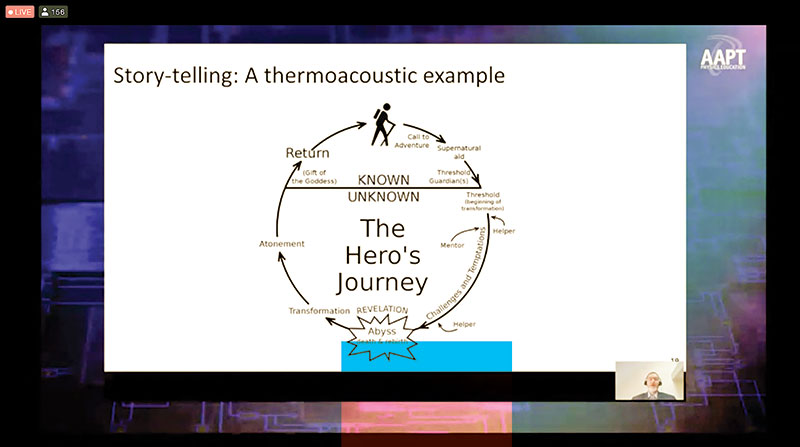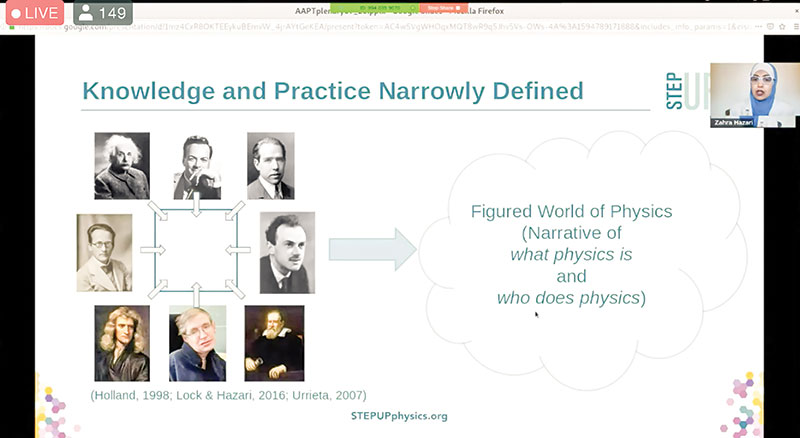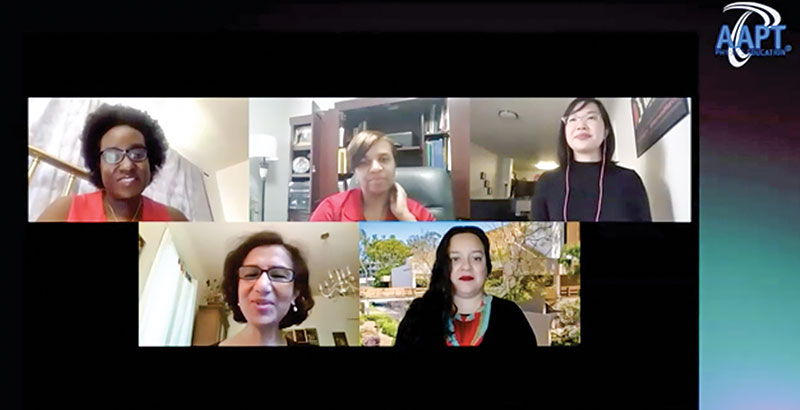Fostering Engagement in Physics during a Pandemic
Fall
2020
Meeting Notes - SPS Reporters at Science Conferences
Fostering Engagement in Physics during a Pandemic
2020 AAPT Summer Meeting
By:Sarah Anderson, SPS Member, Wake Forest University
 Educational institutions across the United States have been driven to completely restructure and transform a variety of learning programs in response to the COVID-19 outbreak this past spring. As students were forced to return home, not everyone faced ideal circumstances.
Educational institutions across the United States have been driven to completely restructure and transform a variety of learning programs in response to the COVID-19 outbreak this past spring. As students were forced to return home, not everyone faced ideal circumstances.
The virus presented a challenging new obstacle for physics teachers as well. The transition to remote instruction was difficult for students to navigate, and engaging students became even harder in a remote learning space. This issue was discussed extensively at the 2020 AAPT Virtual Summer Meeting.
I attended sessions that discussed remote learning and diversity and equity issues. After learning remotely for half a semester and doing a summer internship unexpectedly online, I wanted to understand the implication of this transition on national physics departments and to better understand the reasoning behind new learning practices implemented by teachers. Furthermore, being one of few female physics majors at Wake Forest University, I had a particular interest in the equity and inclusion aspects of the conference.
A talk by Dr. Andrew Barnard was one of the most interesting. Discussing a new model for interdisciplinary teaching in physics, he first broke physics down into two main components: physical laws and mathematics, and application. Instruction tends to begin in the former, whereas comprehension often starts in the latter, leading to a disconnect for students. As a result, Barnard believes that teachers should use applications to first build excitement and curiosity so that students will be motivated to pursue the higher-level and more difficult content. As an associate professor of mechanical engineering, Barnard implements this technique by teaching physical phenomena through various application spaces.
Another presentation that I found particularly interesting was given by Zahra Hazari on the second day of the conference. Her talk focused specifically on gender differences. A leader of STEP UP, a social movement to promote cultural change in physics, Hazari first explained the “box” of physics. She defined this box as inclusive of everything meaningful to the physics community, and naturally, it was created by physicists. Because the history of physics predominantly includes White men such as Einstein, this group of physicists is not very diverse. As a result, this box leads to a “figured world of physics,” a place where there is limited participation from diverse groups and certain characters are deemed most important.
On the final day, I listened in on a discussion of the voice of women in physics, led by a panel of five women. Each person discussed her personal goals and professional career path as a woman in physics. Interestingly, they all agreed that seeing students grow and succeed was the most rewarding experience for them. They also discussed the importance of mentorship, especially for women pursuing a career path in physics. Even though mentoring relationships may be difficult to establish, the panelists described how valuable they can be. They also shared stories about the hardships of being a female in the physics community. In the words of Dr. Chandralekha Singh, women “have to work really hard to dismantle these systems of power.”
Student engagement emerged as an overall theme of the conference. Many teachers are trying to foster greater engagement in physics among their students, including among women and students from other underrepresented groups. Especially during this time, I think it is extremely important that teachers discuss such issues because they play a fundamental role in student growth and development. I largely credit my teachers in both high school and college with stimulating and maintaining my interest in physics. I believe that a teacher can completely change a student’s perspective on a subject and play a significant role in their chosen academic path. Overall, I found the conference to be very insightful, and I am very grateful for the experience!


